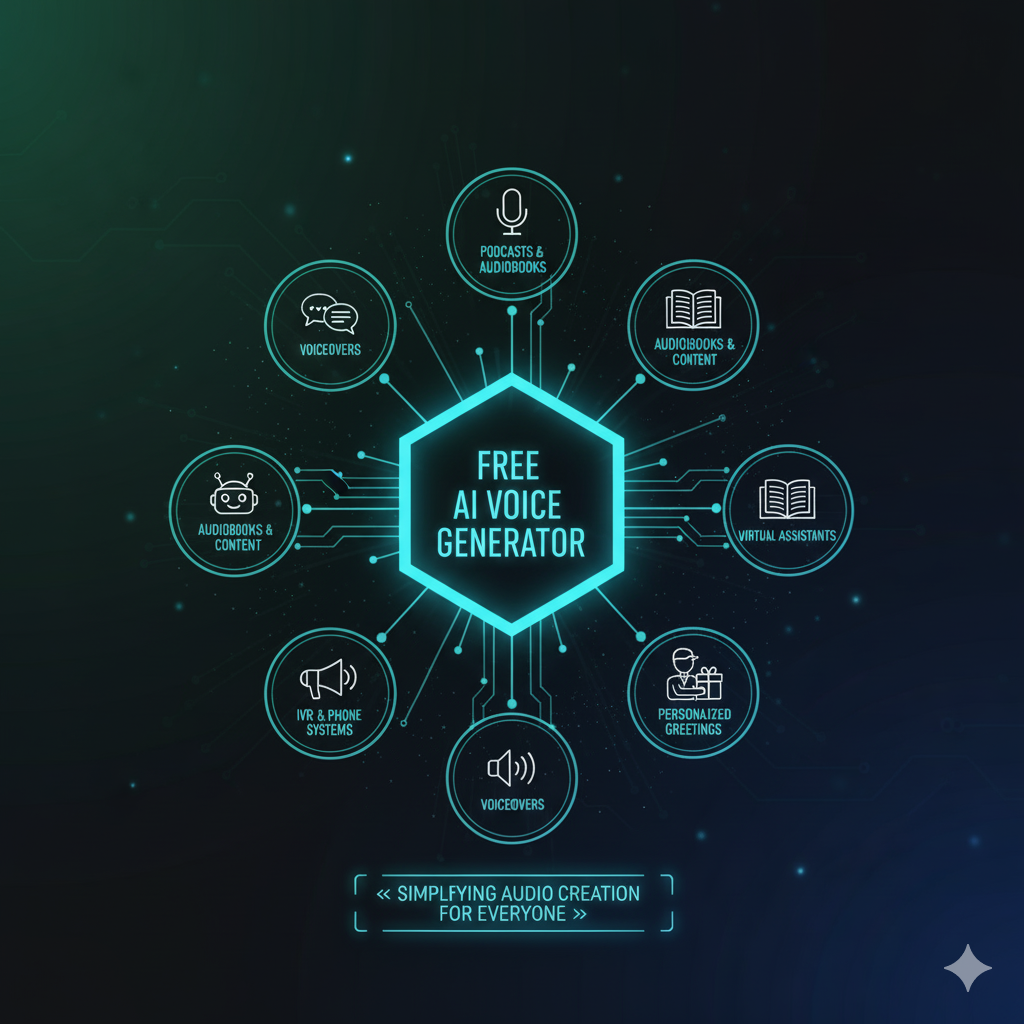Free Voice Generator: Exploring Its Uses, Benefits, and Emerging Trends

Artificial intelligence has changed how people create, communicate, and consume content. One of the clearest examples of this shift is the growing use of the free voice generator. What began as a basic text-to-speech tool has evolved into an advanced system capable of producing natural, human-like audio. Whether used for storytelling, instruction, entertainment, or accessibility, a free voice generator has become a practical everyday resource for millions of users.
This article explains how free voice generators work, why they matter, and how different fields rely on them. It also highlights common challenges, practical tips, and what future advancements might look like.
Understanding What a Free Voice Generator Actually Does
A free voice generator is a tool that converts written text into spoken words. It relies on artificial intelligence to interpret language, add natural pauses, and render speech in a chosen voice. Modern generators use neural networks trained on hours of recorded speech, allowing them to mimic realistic tone and rhythm.
While simple in appearance, these tools involve a sophisticated series of steps:
Text Processing
The system reads the input, identifies grammar, punctuation, sentence structure, and determines how the voice should flow.
Linguistic Analysis
The tool evaluates how words should be pronounced, where emphasis should be placed, and how sentences should connect smoothly.
Voice Synthesis
AI models convert the analyzed text into audible speech using pre-trained voices. These voices may sound neutral, expressive, animated, or even character-like.
Audio Output
Finally, the generator produces an audio file that users can download and incorporate into videos, presentations, or interactive content.
This workflow occurs within seconds, providing a fast and efficient alternative to recording voiceovers manually.
Why Free Voice Generators Are Becoming Mainstream
The demand for digital content is higher than ever, and people need tools that allow them to work quickly, affordably, and independently. A free voice generator meets all of these needs.
Quick and Easy Production
Users can generate polished narration without microphones, soundproofing, or recording skills.
Cost-Free Access
Traditional recording can require expensive equipment and professional voice talent. Free tools remove those financial barriers.
Consistent Quality
AI voices do not vary from day to day. The tone, clarity, and pacing remain the same across multiple recordings.
Useful for Beginners and Professionals
Students, freelancers, business owners, developers, and educators all benefit from instant text-to-speech output.
Helps Overcome Personal Barriers
Some users may lack confidence in recording their own voice. Others may have speech impairments or restricted access to equipment. A free voice generator provides a practical solution.
Industries That Benefit Most from Free Voice Generators
Different professions rely on voiceovers to enhance communication, making these tools especially valuable.
Video Creators and Editors
Voiceovers are essential for tutorials, documentaries, social media content, and storytelling. Free voice generators help creators maintain posting schedules without setting up recording sessions.
Educators and E-Learning Designers
In online learning, narration helps explain complex topics, guide students through lessons, and create more immersive content.
Business and Corporate Communication
Companies use AI voices for training modules, customer instructions, presentations, and automated phone messages.
Game Developers and Animation Artists
Indie developers often use free voice generators to test scenes, design character dialogues, or create demo versions before hiring voice actors.
Accessibility Services
Voice generators help individuals with reading challenges, visual impairments, and language barriers by converting text into understandable speech.
This wide range of applications shows why free voice generators have become essential digital tools.
Key Qualities to Look for in a Free Voice Generator
Not all tools offer the same experience. When choosing a free voice generator, consider the following elements:
Natural Sound
The closer the voice resembles real human speech, the better the listening experience.
Multiple Voice Profiles
Variety allows users to match the right voice to the right project—narrative, professional, playful, or technical.
Language Options
Many generators support dozens of languages, helping users reach wider audiences.
Custom Controls
Adjustments to speed, pitch, and emphasis help personalize the audio output.
Export Format
The ability to download the voiceover in standard formats like MP3 or WAV ensures compatibility with editing tools.
Ease of Use
A clean interface with simple controls helps users focus on crafting content, not learning complicated software.
Writing Scripts That Work Best With AI Voice Tools
Text-to-speech output only sounds as natural as the script behind it. Even the best free voice generator performs better with scriptwriting that suits spoken format.
Keep Sentences Clear
Short and mid-length sentences produce smoother audio and reduce robotic pacing.
Use Conversational Language
Written text tends to be more formal. Adapting it to a conversational tone improves flow.
Add Natural Breaks
Line breaks, commas, and periods guide the AI’s rhythm and help avoid rushed delivery.
Check Pronunciation
Unusual terms, acronyms, or names may need simplified spellings or phonetic adjustments.
Avoid Overly Dense Information
If you need to communicate detailed data, break it into smaller sections so the voice generator doesn’t overwhelm listeners.
Following these guidelines ensures your final voice output sounds polished and easy to follow.
Limitations and Challenges of Free Voice Generators
While highly useful, free tools do have boundaries. Understanding these helps users set realistic expectations.
Robotic Tone
Some free versions still struggle with emotional depth or complex inflection.
Limited Voice Choices
Paid tools typically offer a wider selection of voices and regional accents.
Script Length Restrictions
Certain platforms restrict how much text you can convert at one time.
Commercial Use Limits
Free-tier licensing sometimes prohibits using the generated audio in paid or professional projects.
Occasional Mispronunciations
Names, slang, and specialized vocabulary may require manual adjustments.
These limitations are gradually improving as AI technology advances, but it’s important to consider them when choosing a tool.
The Technological Evolution Behind Voice Generation
The rapid progress in natural language processing and neural speech synthesis continues to transform voice generator capabilities.
Neural Network Modeling
Modern tools use deep learning models such as Tacotron and WaveNet, enabling smooth, human-like voice transitions.
Emotional Layering
Upcoming models aim to express a wider emotional range—curiosity, excitement, empathy, or urgency.
Real-Time Generation
Future voice generators may allow live, interactive voice creation for games, presentations, and customer service.
Personalized Voice Creation
With safety measures in place, individuals may soon design AI voices that reflect specific vocal traits or unique characters.
Wider Global Language Support
As training datasets expand, more regional dialects and accents will become available to users.
These advancements signal promising future improvements for both free and paid voice tools.
FAQ: Free Voice Generator
What can I use a free voice generator for?
It can be used for videos, presentations, podcasts, e-learning modules, games, audiobooks, and accessibility tools.
Are AI voices better than traditional recording?
They’re not a replacement for expressive voice actors, but they are excellent for quick, consistent, and budget-friendly narration.
Do free voice generators support many languages?
Many tools support dozens of global languages and different accents, making them suitable for multilingual projects.
Can I use AI-generated voiceovers commercially?
It depends on the platform. Always read licensing terms to confirm whether commercial use is allowed.
How do I improve the quality of my voiceover?
Write clear, conversational scripts with natural punctuation and test different voice options to find the best match.





